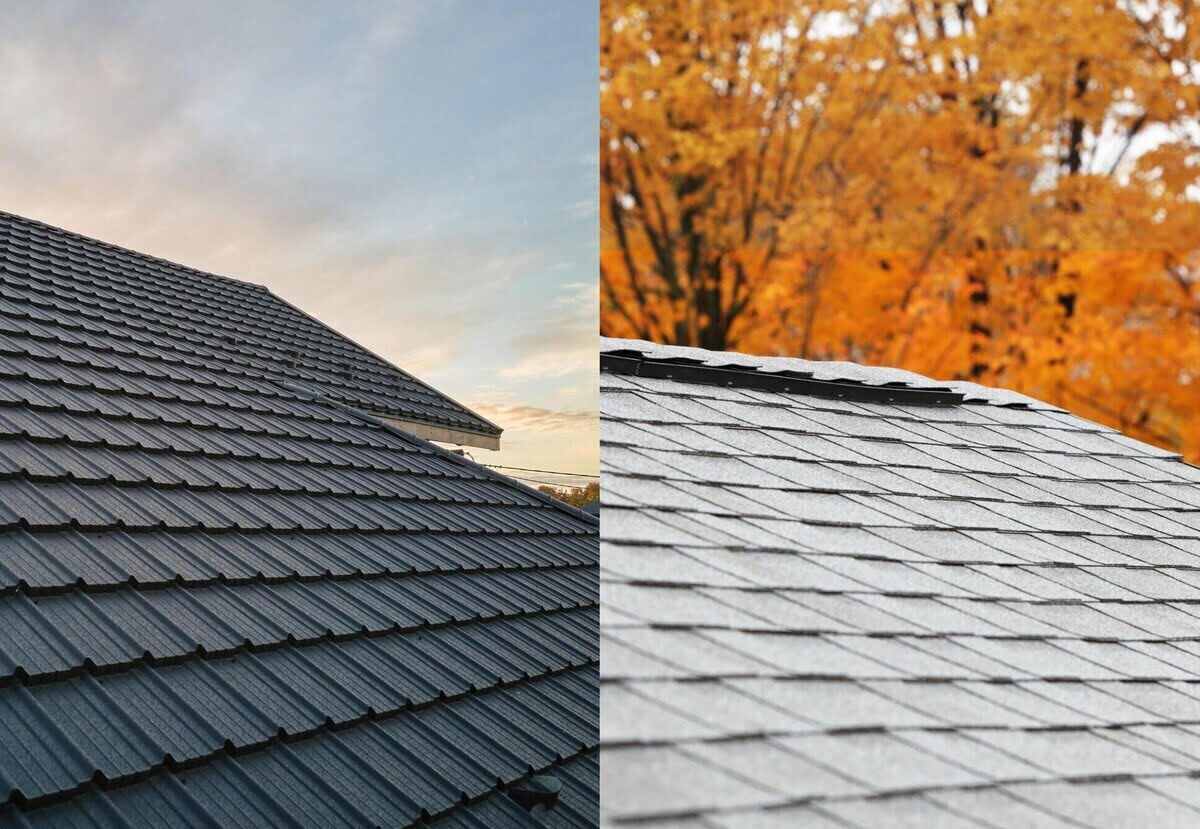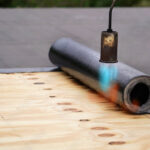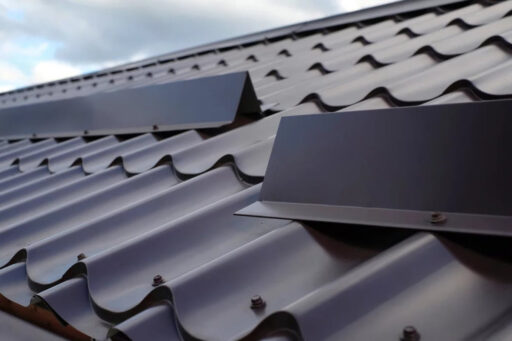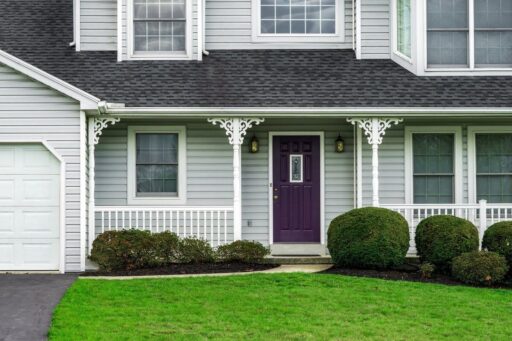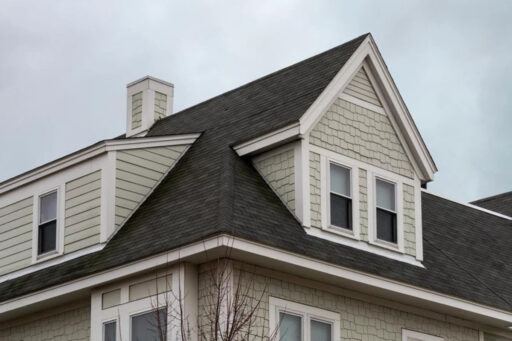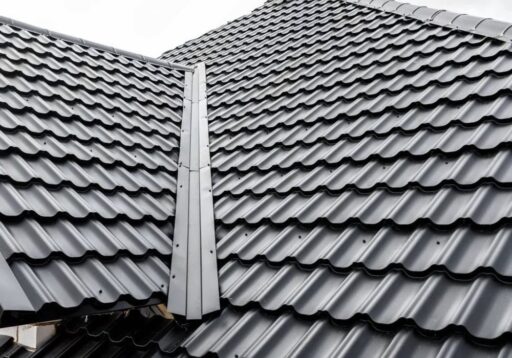When it comes to safeguarding your home, the roof is crucial. It shields you from the elements, maintains interior comfort, and significantly contributes to your property’s curb appeal. With many roofing materials available, choosing the right one can be challenging. Two leading options are metal roofing and asphalt shingles, each with unique strengths and weaknesses. This guide explores the details of metal roof vs asphalt shingles to help you make an informed decision.
1. Durability and Materials
- Metal roofs are made from steel, aluminum, zinc, or copper, known for their strength and resilience. A properly installed metal roof can last 40–70 years, often outlasting the house itself. This longevity translates to significant cost savings over time, as frequent replacements are unnecessary. Metal roofs are also highly resistant to fire and pests, making them ideal for areas prone to wildfires and termite infestations.
- Asphalt shingles, the most popular roofing material in North America, typically last 15–30 years depending on the quality of materials and installation. They are made from a base material coated with asphalt and mineral granules. While not as durable as metal roofs, asphalt shingles are significantly more affordable upfront. However, they may require more frequent replacements, adding to the long-term cost.

2. Maintenance Requirements
- One of the main advantages of metal roofs is their low maintenance needs. Unlike asphalt shingles, which can crack and require periodic repairs, metal roofs generally only need occasional cleaning. Their exceptional resistance to harsh weather, including high winds and heavy snowfall, makes them a reliable choice.
- Asphalt shingles are mostly low-maintenance but do require periodic inspections. Over time, exposure to sunlight can cause them to crack and deteriorate, necessitating regular repairs to prevent leaks. While less maintenance-intensive than other materials, they still require more attention than metal roofs.
3. Aesthetic Options
- Modern metal roofs come in various styles and colours, far from the dull, industrial look of the past. Today’s options include classic standing seam panels and contemporary corrugated styles. Pre-painted metal roofs are available in various colours to match your home’s architectural style. Additionally, advancements in manufacturing allow metal roofs to mimic traditional materials like shingles, tiles, and slate.
- Asphalt shingles offer a wide variety of colours and styles, allowing homeowners to customize their roof to match their home’s aesthetics. They can replicate the look of wood, slate, or even tile roofs, providing flexibility in design. This versatility makes asphalt shingles a popular choice for those looking to achieve a specific look on a budget.
4. Environmental Impact
- Metal roofs are environmentally responsible, and often composed of recycled materials. Due to their extended lifespan, they contribute less landfill waste compared to frequently replaced asphalt shingles. Additionally, metal roofs reflect sunlight, reducing cooling costs in hot summer months. This reflectivity can also help mitigate the urban heat island effect, which is particularly relevant in cities like Vancouver.
- The environmental impact of asphalt shingles is a growing concern. Production often involves petroleum-based products, and discarded shingles contribute significantly to landfill waste. Additionally, asphalt shingles absorb heat, contributing to the urban heat island effect. While there are some recycled asphalt shingles available, their use is not as widespread as metal roofing materials.
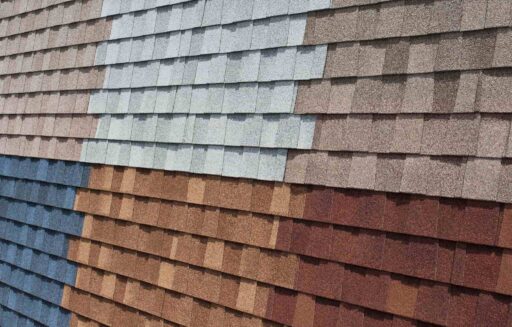
5. Cost Considerations
Initial Cost
- Metal Roofs: Generally more expensive upfront but can be more cost-effective in the long run due to their longevity and low maintenance.
- Asphalt Shingles: Significantly cheaper to install, making them a budget-friendly option initially. However, frequent replacements can add to the long-term cost.
Long-Term Cost
- Metal Roofs: Potentially lower long-term cost due to their durability and low maintenance needs.
- Asphalt Shingles: Higher long-term cost due to the need for more frequent replacements and maintenance.
6. Weather Resistance
Metal roofs perform exceptionally well in various weather conditions. Their durability against high winds, heavy snowfall, and extreme temperatures ensures year-round protection for your home. This reliability is particularly beneficial in areas with severe weather patterns, such as Vancouver, known for its heavy rainfall.
Asphalt shingles perform adequately in most weather conditions, but are susceptible to damage from strong winds and hail. In areas prone to harsh weather, metal roofs might be more reliable. Asphalt shingles offer minimal fire resistance compared to metal roofs.
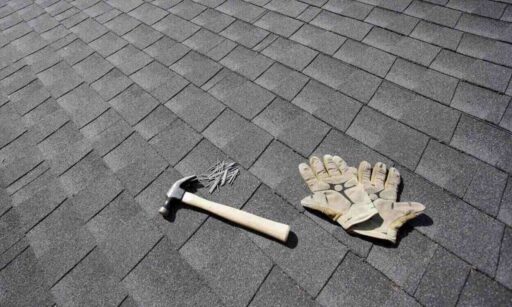
7. Noise and Insulation
One potential drawback of metal roofs is noise. They can amplify sounds like rain and hail, but proper insulation and the use of thicker metal panels can significantly reduce this issue. Additionally, installing metal roofs requires specialized skills, so finding a qualified roofing contractor is essential.
Asphalt shingles naturally provide better sound insulation compared to metal roofs, reducing the noise from rain and hail. This can be a significant advantage for homeowners sensitive to noise.
The Verdict: A Tailored Choice for Your Home
Choosing between a metal roof vs asphalt shingles requires a careful evaluation of your priorities and circumstances. Here is a comparative summary to help you decide:
| Feature | Metal Roof | Asphalt Shingles |
|---|---|---|
| Budget | Higher initial cost but potentially lower long-term cost | Lower initial cost but potentially higher long-term cost due to replacements |
| Climate Suitability | Excellent in harsh weather (wind, hail, snow), superior fire resistance | Good in moderate weather, fair fire resistance |
| Desired Lifespan | 40–70 years with low maintenance | 15–30 years with moderate maintenance |
| Style and Aesthetics | Variety of styles and colours, modern and traditional finishes | Wide variety of colours and styles, generally more traditional |
| Environmental Concerns | High sustainability with recycled materials, energy efficiency | Lower sustainability, petroleum-based products, landfill waste |
| Noise Insulation | Potential noise issues, mitigated with proper insulation | Naturally better noise insulation |
At Mark’s Roofing, we can guide you through the decision-making process. We can assess your specific needs, evaluate your roof’s structure, and provide tailored recommendations based on your budget, climate, and desired aesthetics. Don’t hesitate to ask questions and get quotes from us to ensure you make the best final decision.
Final Thoughts
Choosing the right roofing material is crucial for your home’s protection and appearance. The decision between a metal roof vs asphalt shingles should be based on your budget, climate, and long-term goals. Metal roofs offer durability, longevity, and low maintenance, making them cost-effective over time despite a higher initial cost. They are also eco-friendly and withstand harsh weather conditions. Asphalt shingles are more affordable upfront and come in various styles and colours, but they have a shorter lifespan and require more maintenance. They are less sustainable due to petroleum use and higher waste. Consulting a qualified roofing contractor can help you make the best choice for your home.

